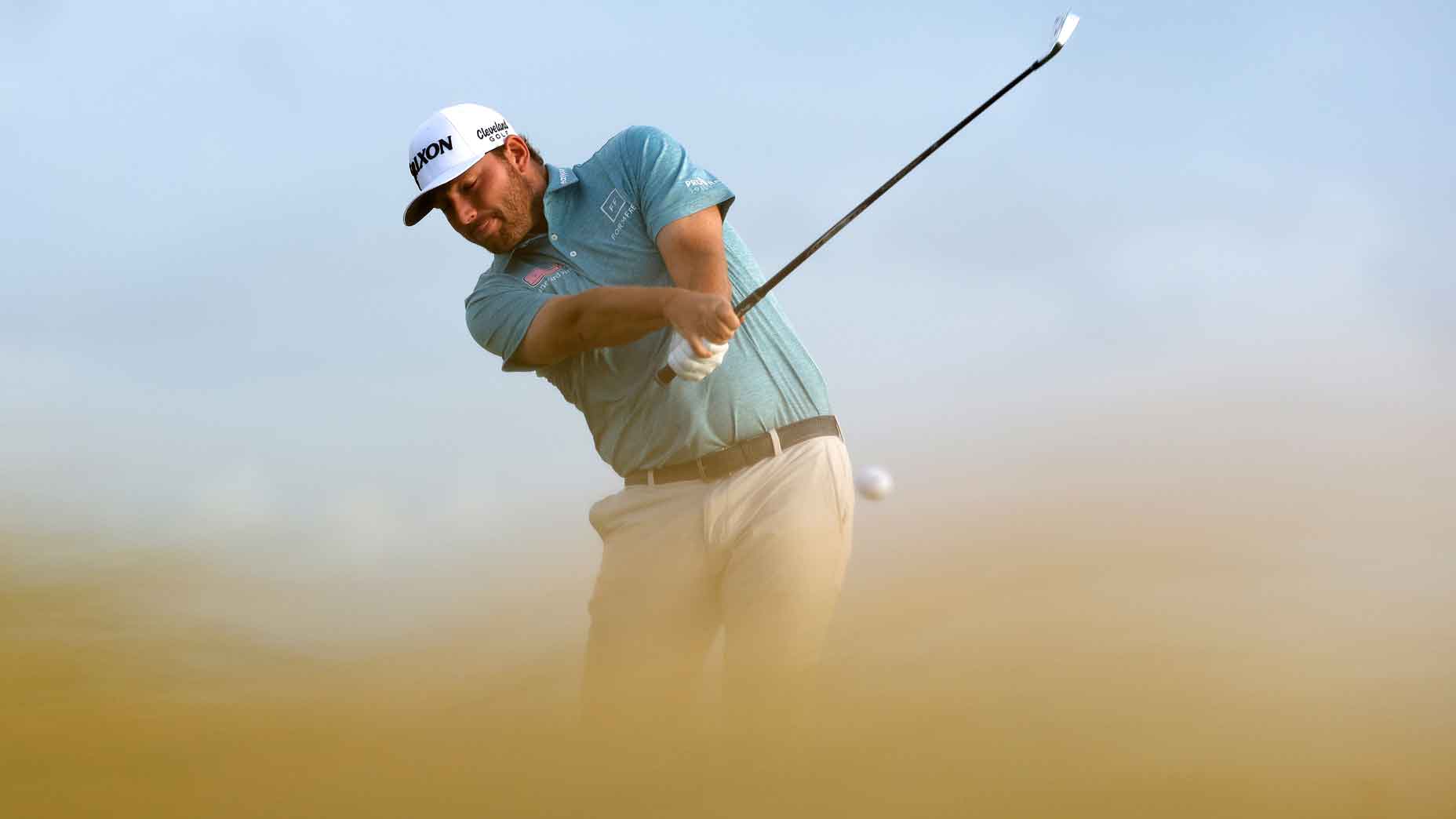PACIFIC PALISADES, Calif. — When Matthew NeSmith grabs an iron out of his bag, he’s in total control.
Smith’s practice session on Riviera Country Club’s pristine driving range is a stripe show. He aims at a flag, draws back the club and sends ball after ball soaring through the air, eventually landing within a few yards of his intended target.
The third-year PGA Tour pro might not be on the radar of casual golf fans, but since earning his card in 2019, he’s been one of the top iron players in the game. Smith has ranked 23rd and 11th in SG: Approach in his first two full seasons on Tour, and it’s a large reason why he’s been able to stick around The Show.
“It’s always been a strength of mine,” NeSmith told GOLF.com. “I was lucky enough to have a dad who knew the fundamentals of the game pretty well, and coaches along the way that taught me how to play the game correctly.”
Now, it’s a matter of maintaining that strength he relied on to get him to the Tour. And the recipe is a simple one: choose a target on the range and try to hit it as close as possible.
“I just see if I can execute on the range,” NeSmith said. “Can you aim at a flag and have it end four paces left? Can you aim right of a flag and hold it into a breeze? A lot of it is seeing if you can hit the right shots and still end up in the same spot.”
Another key to his elite iron play? An advanced understanding of his ballflight.
“The key to golf is no matter how much you curve it, can you land it where you want to?” he said. “A lot of amateurs struggle to understand that they curve it 30 yards. That’s a part of the game. Look at some of the best players in the world — they don’t hit it dead straight, that’s for sure. But they have a really good idea of what the golf ball is going to do, how much it’s gonna curve. They do a great job of understanding their game.”
Understanding your own flight, NeSmith said, is the easiest way to improve your scores. Even if you don’t get any better skill-wise, having an understanding of how your ball curves will result in lower scores.
“The great thing about amateur golfers is they have a pattern,” NeSmith said. “It might not be an awesome pattern, but they have one. That’s something about amateur golfers that’s really cool — they have a pattern they can rely on. They just need to understand it and work on it a bit.
“If amateurs can understand that we don’t play perfect golf out here, they can improve their own games.”
